This is my first forest farming post here on Steemit, what better way to get started than with ginseng! Planting season is upon us as plants begin to senesce for winter slumber ahead. In their natural wild state during this is the time of year, ginseng plants are dropping their berry clusters and begining to draw back underground. Unfortunately, this amazing wild medicinal is becoming very threatened in the wild. Over harvesting and irresponsible harvesting practices by those trying to make some extra cash have come close to wiping this precious planet out of the wild. In our area, for instance, it used to grow wild but you would be hard pressed to find anyone who knows what it looks like in the wild. I have spoken with just a few 'old timers' who remember the days when one could find ginseng wild. They too acknowledge why it is no longer found. While many herbal consumers prefer 'wild harvested' over 'cultivated' herbs many do not realize that this practice could possibly push some species to extinction in the wild. A happy medium of the two is becoming a small movement that we are honored to participate in called 'wild simulated' and 'forest grown' which are different in their respective production methods. Although we do both methods we try to steer more towards wild simulated but some energy over the years does go in on the back end, which I'll get into in further posts. Today I'm going to be showing you how to plan and plant for something in between. By 'farming' ginseng and other precious forest medicinals you are not only doing you part to help preserve these species but taking pressure off of the wild populations.
More and more herbal suppliers are seeking out 'forest grown' and 'wild simulated' species instead of 'wild harvested'. You can help these suppliers fill their demands in responsible manners by growing them yourself on wooded lots or by requesting these herbs to be verified grown/harvested responsibly. Mountain Rose Herbs is one supplier who is now actively seeking 'forest grown verified' which is a verfication program offered by PCO (Pennsylvania Certified Organic). Next year we are hoping to get this verification as well as organic certification for all our crops. You'll hear more on this at some point.
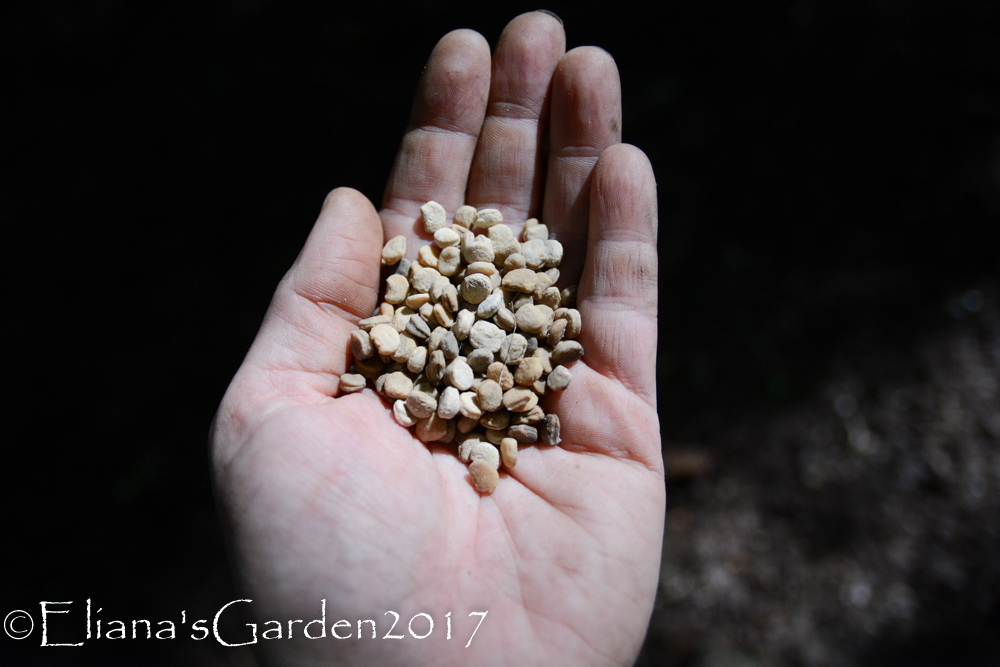
To begin with, when you purchase ginseng seed (or harvest seed) it needs to be stratified. Stratified means that it needs to go through a cold period to simulate winter in order for it to break dormancy. You can buy stratified seed or you can stratify it yourself. We are in our 3rd year of planting ginseng and have explored a few different suppliers of stratified seed. We have found one that we have been pleased with year after year and will continue to purchase from until are plants are providing our seeds.
As you enter the forest there are indicator species you can look for such as bloodroot and goldenseal that you can find good habitats near. If you don't have these species or don't know what you are looking at then take a gander at the forest floor and forest canopy. This is always the first thing we do when we are searching a new planting ground. Also take notice to which direction your planting site will be. Ginseng likes North-Northeast habitats, although we have successfully gotten beds started on west and south slopes.
The best time to plant is going to be in early to mid autumn, just as the leaves are beginning to fall but not all fallen. As you look at the forest floor notice the leaf types and the light speckling. Look for areas that have roughly 80% light, too much light and your plants will not be happy and total shade is not good either....just a little light coming in. Now look at the leaf litter...what types of leaves are you standing on/around. Poplar is your friend. The poplar leaves break down quickly and provide a lot of calcium for calcium hungry ginseng. If you find a good stand of poplar to plant in you will have to amend the soil very little if at all during the many years it takes for ginseng to be ready for harvest.
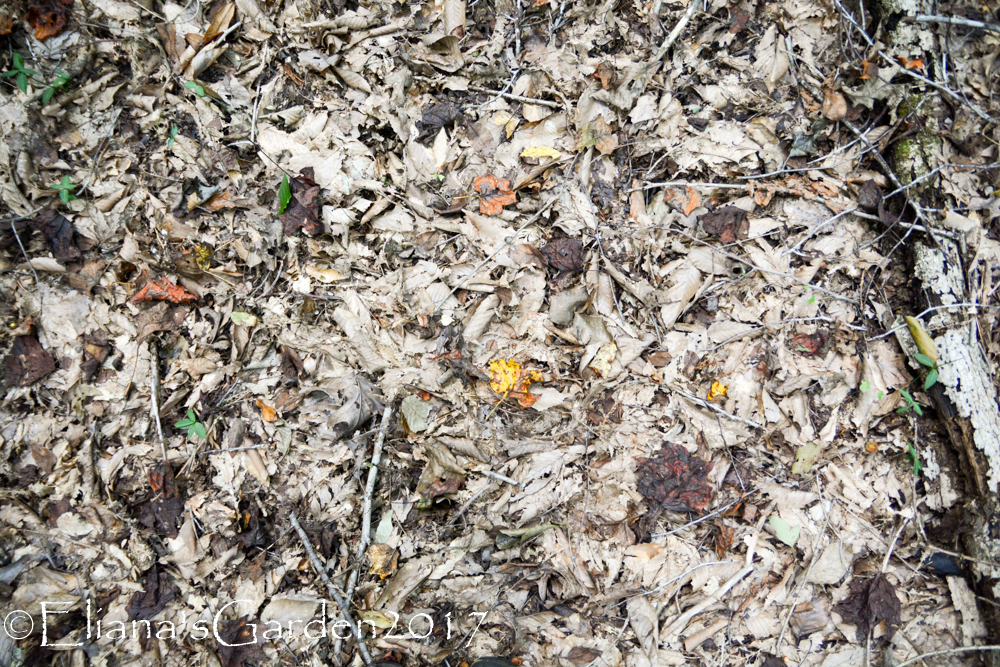 Forest floor
Forest floor
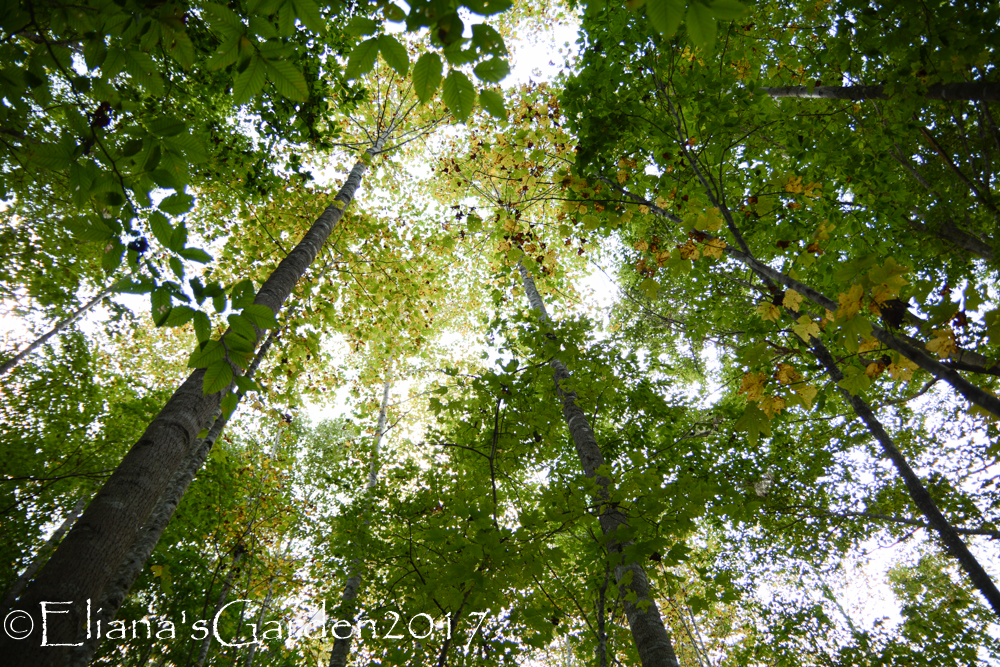 Forest canopy
Forest canopy
Now look at the canopy. Does this back up what the forest floor says? Light? Trees? Poplar, beech, maple all break down pretty quickly and will not pack hard onto the baby plants as they are trying to emerge. Try to stay clear of oak if you can, it is high acid and leaves are dense taking a longer time to decompose.
Okay, so you've found your spot now. Any young trees or saplings need to come out? Cut them out if so, be mindful of how much light you are allowing in when you do. Don't mind the roots, they will decompose as well and add nutrients to the soil as they do.
As you clear your site from limbs, branches, twigs, small trees you may want to put them in a V shape just uphill of your area. This does two things for you: it is a indicator on where your patch is next year when you come back and it also can help direct runoff water around your bed to prevent your seeds/plants from washing away during a hard rain, especially if you are planting on a hard slope.
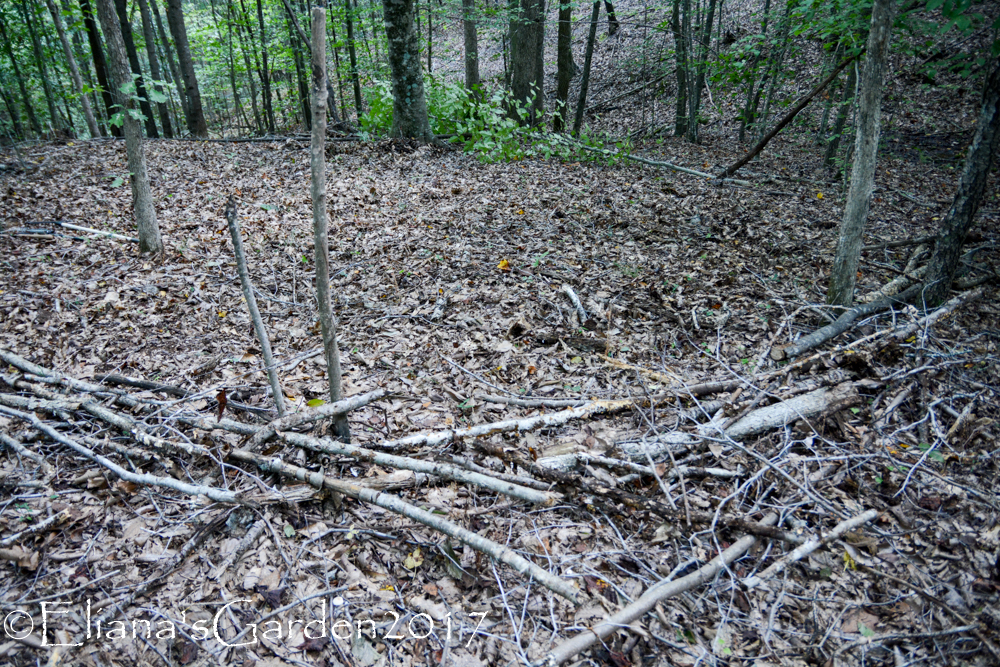 Upslope V
Upslope V
Next you want to pull back all the leaf litter and duff all the way to the forest soil. This takes a lot of raking but make sure you are exposing the soil. As you pull back the leaf littler take into consideration the fact that you are going to be pulling ALL this back on top of the planted area and probably much more from surrounding areas. We like to start towards the center and pull it all the way around the perimeter so it is easier to pull back in...some goes up, over, and down respectively. Don't rake it into the branch barrier either...it's a pain to get out.
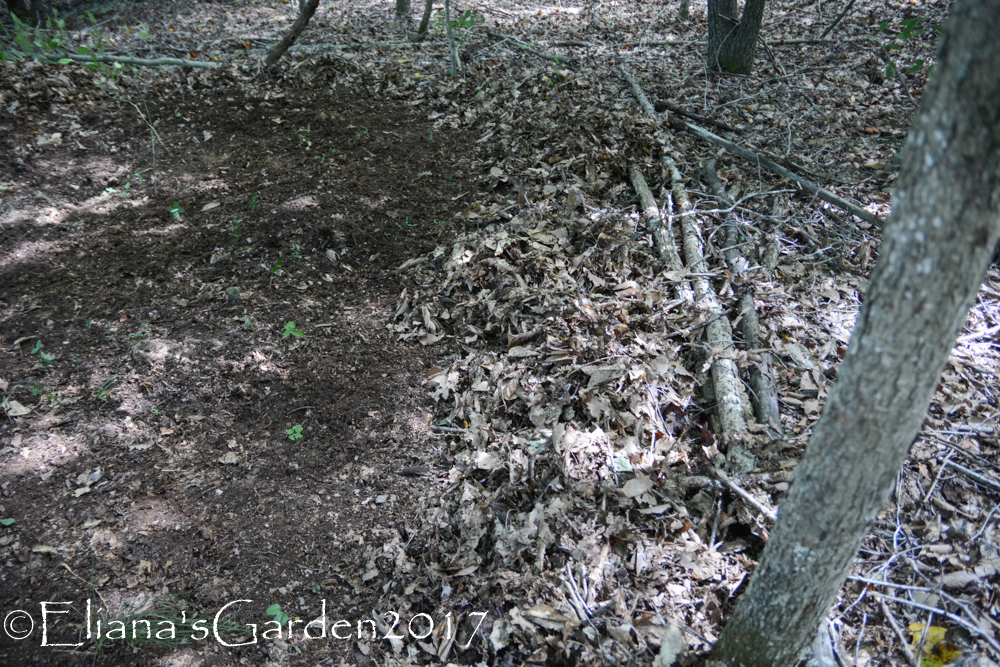
Next take a few minutes to pull weeds that may compete for growth space and nutrients. This doesn't have to be perfect but will help those little babies if there's not too much competition. Also remove any rocks at this point.

Now we typically will either slash a machete all over the place or rake good with a hard rake to loosen the soil a bit. In the past we have also experimented with skipping this step altogether, making rows, and even tilling. We find just loosening the soil with a hard rake is just fine for all intents and purpose and is much less labor intensive.
Now time for seeding. We like to slowly walk starting on opposite sides until we meet in the middle, lightly broadcasting as we go. You want to aim for roughly 5 seeds per square foot with the hopes that by the time it is time to harvest (at least 7 years out) you will have one healthy plant per square foot.
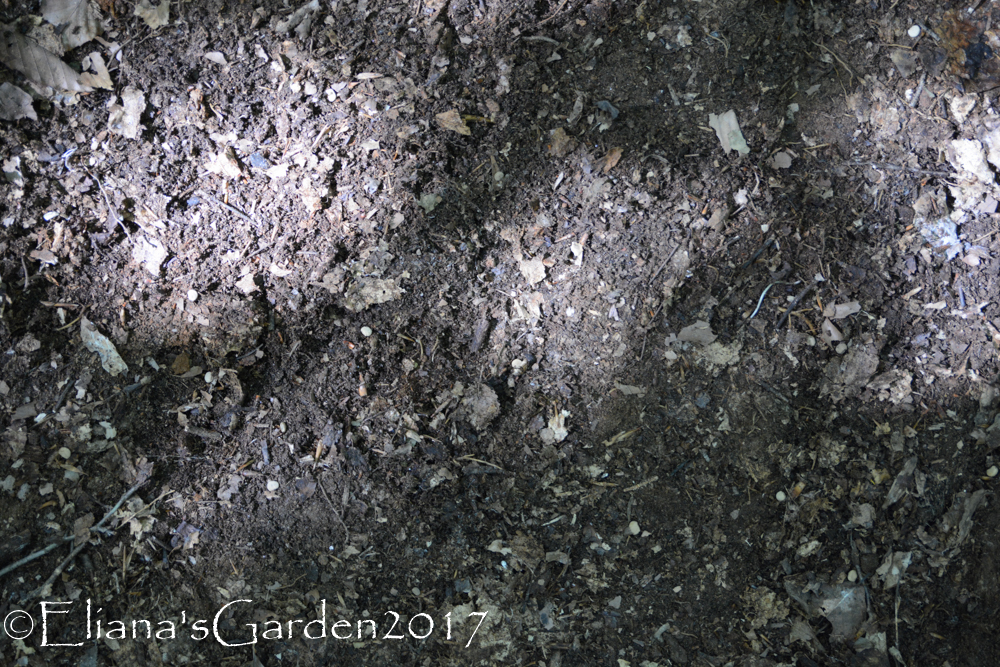
Now we like to do something we call the 'ginseng two-step stomp'. It feels kinda like you are line dancing as you slowly work your way across the patch stepping the seed hard into the ground. This is to make sure your seed has good ground contact and is less likely to wash away. Look closely at the picture below...you can actually see our footprints all over.
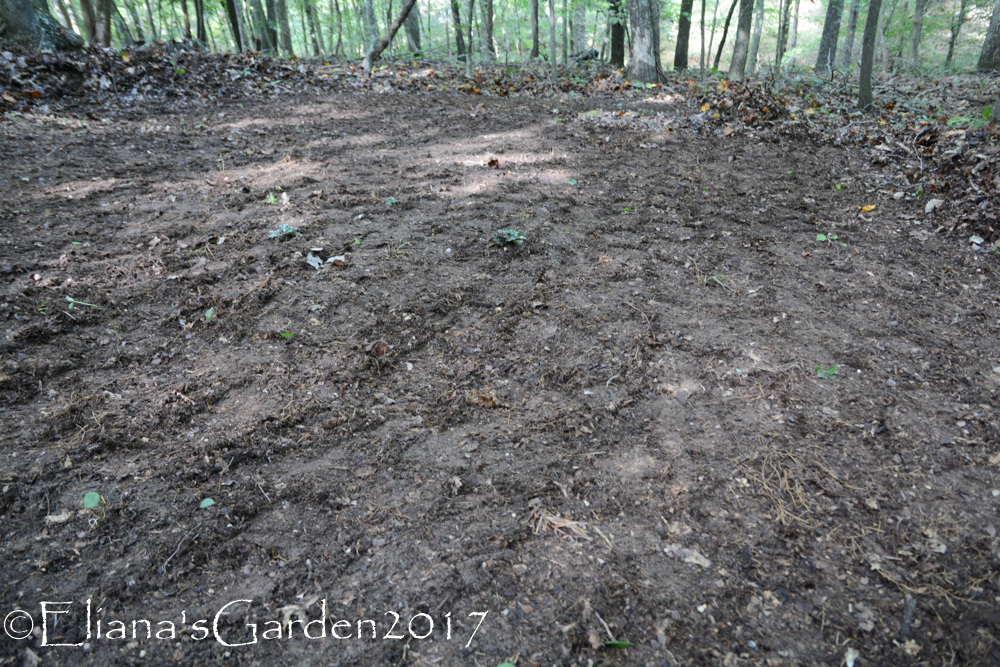
Now time to cover those babies up!! Rake all the leaves back onto the planting area. You will be dumbfounded how little leaves were returned when it felt like you took a ton off...it won't cover the same. You'll now want to go rake up leaves from surrounding areas and spread them on top of the seed bed to ensure good coverage. You'll want around 4 inches of leaf litter on top of them with more getting ready to fall from the canopy as autumn ensues.
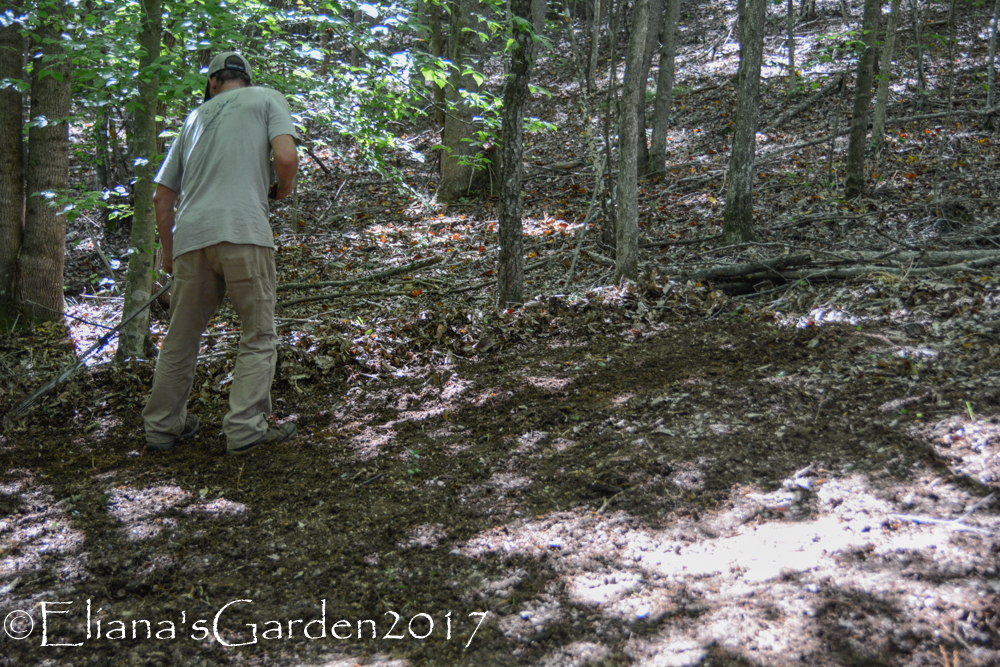
Okay, seed bed is well covered. You may want to take a gps coordinate or mark a tree so you remember it over the years (hopefully you'll plant more and more scattered around and need a way to remember them all with their planting year). Go home and make a record with good notes on when, how, etc in case you ever need it for sales permitting.
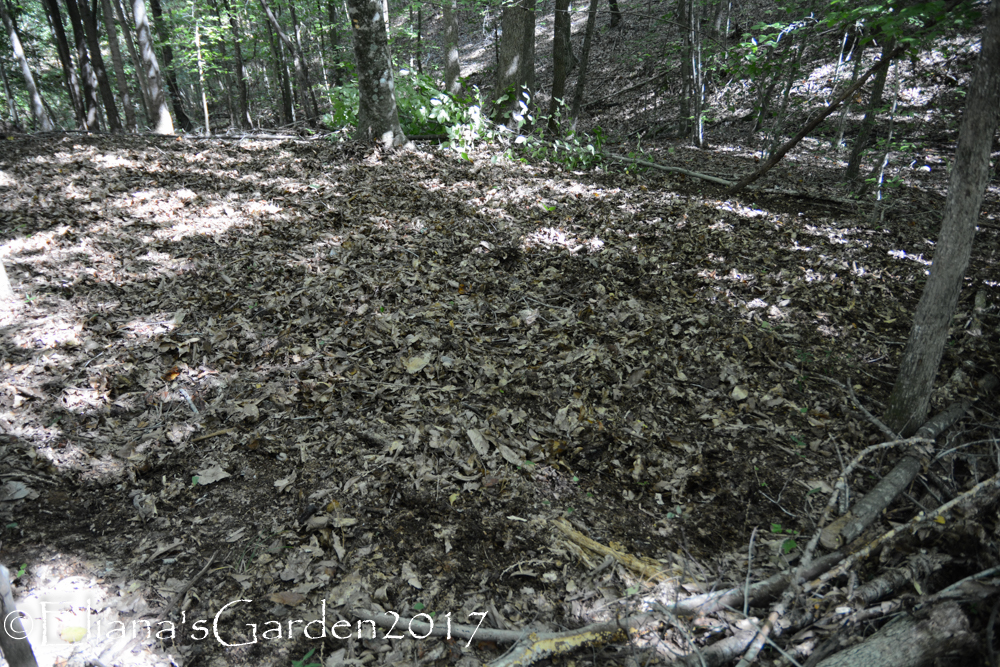
Side notes: We don't like to plant huge areas, no monocropping please. Large areas that only have this one species are going to be more susceptible to diseases, pests and poachers (just like any other crop). You can inter-crop goldenseal as a earlier harvest bonus that also has the potential to act as fungicide for the ginseng.
Happy planting friends!! Be responsible when encountering this precious, threatened species in the wild. Many of us will take off the leaves and plant the seeds so that they can buy another year of life hidden from poachers.
Closing thought: Be sure to follow us here on Steemit to catch a upcoming post about transplanting ginseng seedlings and maybe even an opportunity for plant swapping!!